Discover the rich and expansive world of Disney's The Nutcracker and the Four Realms
Confectionery architecture, elaborate costumes and a star-studded cast make the reinvention of the classic tale a must-watch
In 1892, Pyotr Ilyich Tchaikovsky conjured dreams of roaring fires, Christmas trees, and a feast of sweets. He had been commissioned to write the score to a two-act ballet adapting ETA Hoffmann’s festive story The Nutcracker and the Mouse King and the later tale it inspired, Alexandre Dumas’s The Story of a Nutcracker.
The music he wrote – enchanting and delicate, with notes that fall like flurries of snow – has since become a Christmas tradition. Indeed, it's now performed annually by ballet companies across the world, and has been retold and reinterpreted by the generations it has enchanted.
The latest to pick up the baton is Disney – The Nutcracker and the Four Realms not only revisits the fantastical worlds created by Tchaikovsky, Dumas and Hoffmann, but also expands on them in a way never seen before.
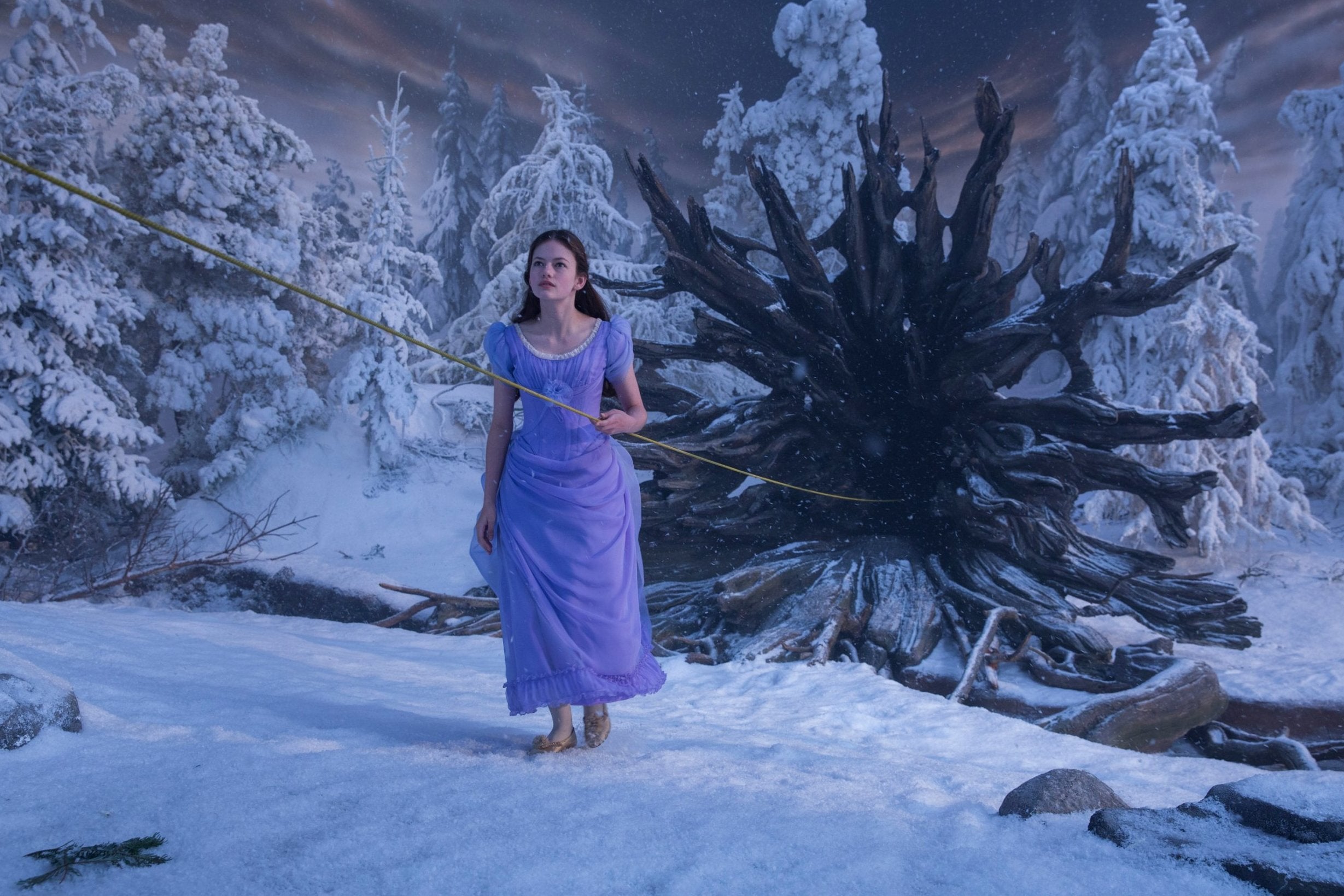
In this new version, directed by Lasse Hallström and Joe Johnston, Clara (Mackenzie Foy) is bestowed with a mysterious gift from her late mother that leads her to a new land, filled with wondrous sights, but plagued by growing disharmony between its four realms: the Land of Snowflakes, the Land of Flowers, the Land of Sweets and the mysterious Fourth Realm.
Although these lands draw from the Nutcracker story’s rich history, it was crucial that they had a sense of life to them. They needed to feel tangible and believable.
That meant an emphasis on real locations over CG wizardry, with vast sets being built at Pinewood Studios and a detailed approach to worldbuilding, as production designer Guy Hendrix Dyas looked to create what could function as a real society, with the realms all having their own part to play. They also needed their own distinctive looks, from homes made out of real sweets to a twisted-looking carousel. Here’s how the fantastic appearance of each of the four realms was achieved.
The Land of Sweets
Cotton candy, nougat, gumdrops, marzipan, chocolate, gingerbread – it’s the land anyone with a sweet tooth will find hard to resist. And it was all the harder for the film’s own cast and crew, since the set was actually created using real confectionery: chocolate for the roof tiles, nougat for the walls, and boiled sweets for the windows.
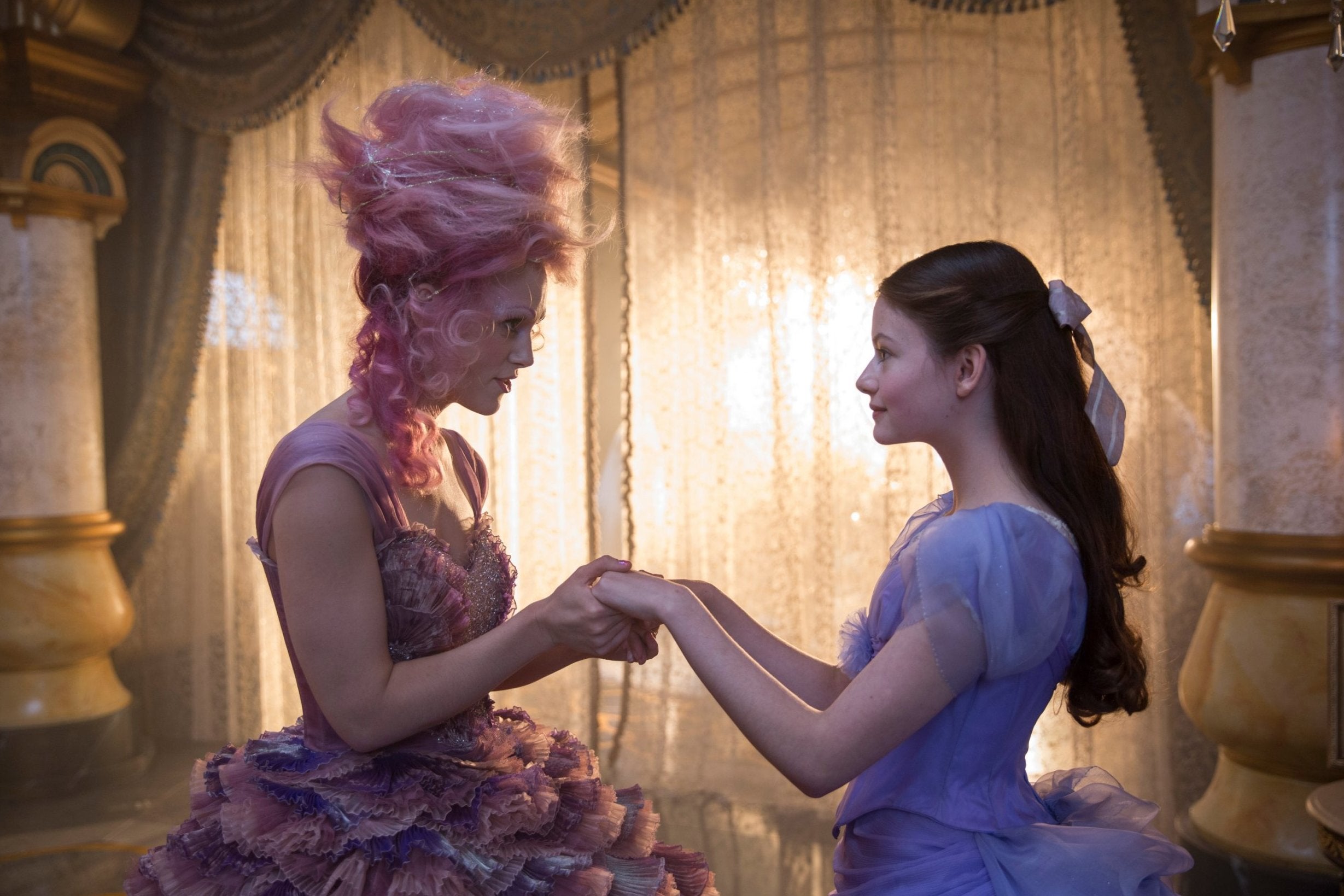
Framed by the steam rising from its factories, the Land of Sweets is a hub of production, kept busy under the guidance of its regent, the Sugar Plum Fairy (Keira Knightley). As sweet as the creations all around, her dress is designed to emulate crystallised sugar, inspired by the hard candy she takes her name from.
A voluminous skirt of almost 200 pleated fans layers metallic organza fabric in pink, purple, silver and gold, all combined with netting, satin, beads, pearls, and sequins. And, to top it all off, there’s a bouffant of pink hair made to resemble candy floss, thanks to a wig made out of yak hair and a makeup look that uses strategic highlights to give the character a doll-like sheen.

Watch Apple TV+ free for 7 days
New subscribers only. £8.99/mo. after free trial. Plan auto-renews until cancelled

Watch Apple TV+ free for 7 days
New subscribers only. £8.99/mo. after free trial. Plan auto-renews until cancelled
The Land of Flowers
With more than two million individual CG flowers used in its creation, this land is bursting with colour. However, on set, Dyas insisted on the use of real flowers, so that the actors could stay immersed in a cloud of their fragrance. The Land of Flowers is home to wheat farmers, perfume-makers, and beekeepers, with a landscape inspired by the villages of the south of England, although littered with Dutch-style windmills – all covered in flowers, of course.
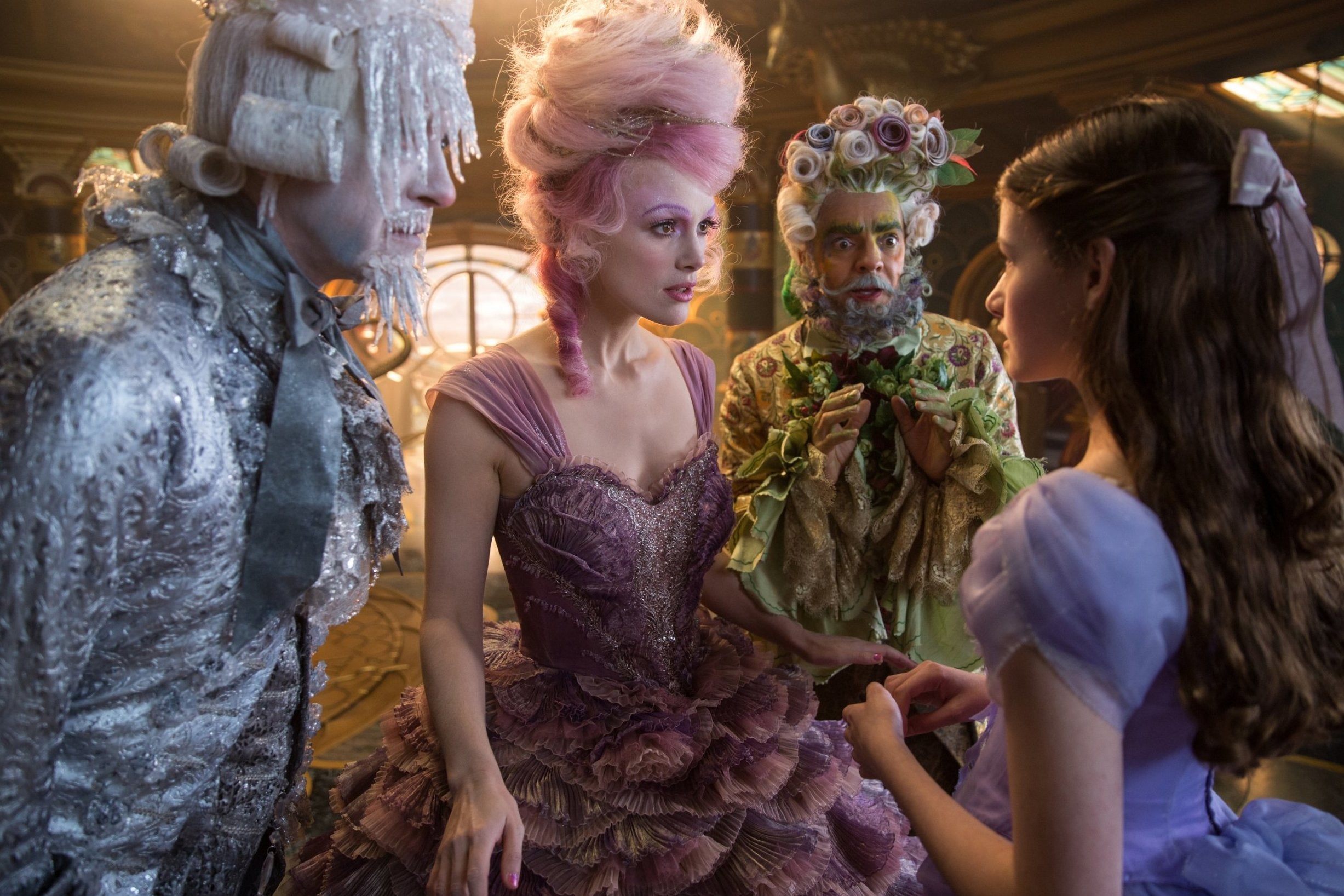
As regent, the excitable Hawthorne (Eugenio Derbez) is similarly drenched in florals. He wears an extravagant wig, based on men’s hairstyles from the 1750s, with curls that carefully mimic a bouquet of rosebuds. Costume designer Jenny Beavan took delight in the details: the buttons on Hawthorne’s clothes are made to look like small flowers, while his stockings feature a hand-painted floral design that winds up each leg.
The Land of Snowflakes
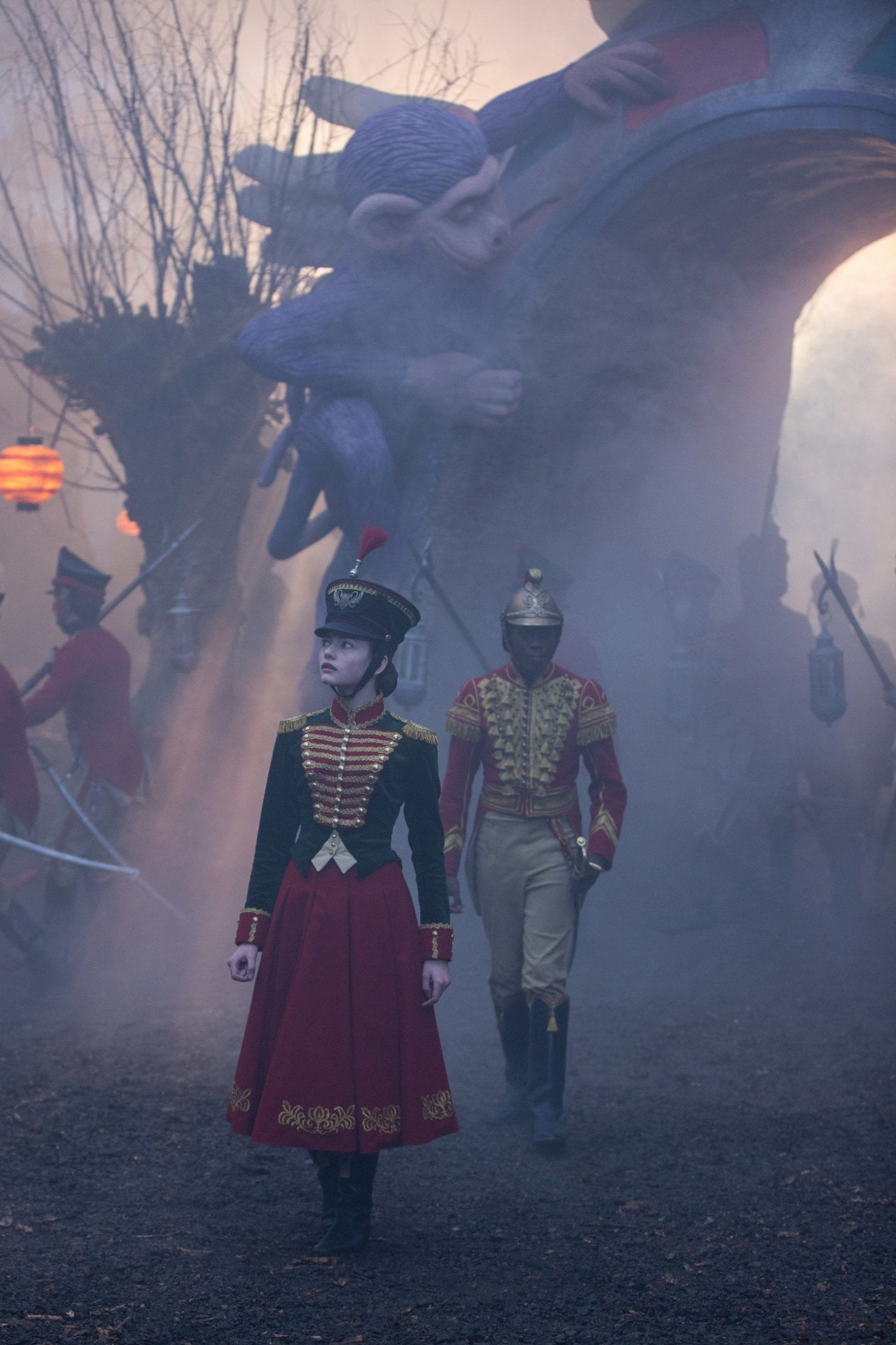
At some point in history, a large glacier travelled down from the north and wedged itself between the Land of Flowers and the Land of Sweets. It’s here that the inhabitants of the Land of Snowflakes have made their home, in mountainous settlements that mimic 16th-century German villages, albeit crafted entirely from ice. Its people are largely aristocratic, although others also work as miners, fishermen and ice-producers.
Shiver (Richard E Grant), the regent of this land, may initially come off as frosty as his name implies, but he’s a true gentleman at heart. His appearance, however, leaves no room for such warmth, as his hair, complexion and outfit are all strictly cool-toned, including a 19th-century wig dripping with icicles, created by makeup and hair designer Jenny Shircore, and stockings that were hand-glittered every time Grant put them on.
All does not seem well in the Fourth Realm. It was once known as the Land of Amusements, a carnival for all, but something has turned it as dark and twisted as its forest. Dyas took inspiration from the work of Arthur Rackham – famous for his illustrations of Brothers Grimm and Hans Christian Andersen fairy tales – for the sea of old, rope-like trees and their spindly branches. Three separate forests were created at Pinewood, with painted backdrops used to create the illusion of depth.
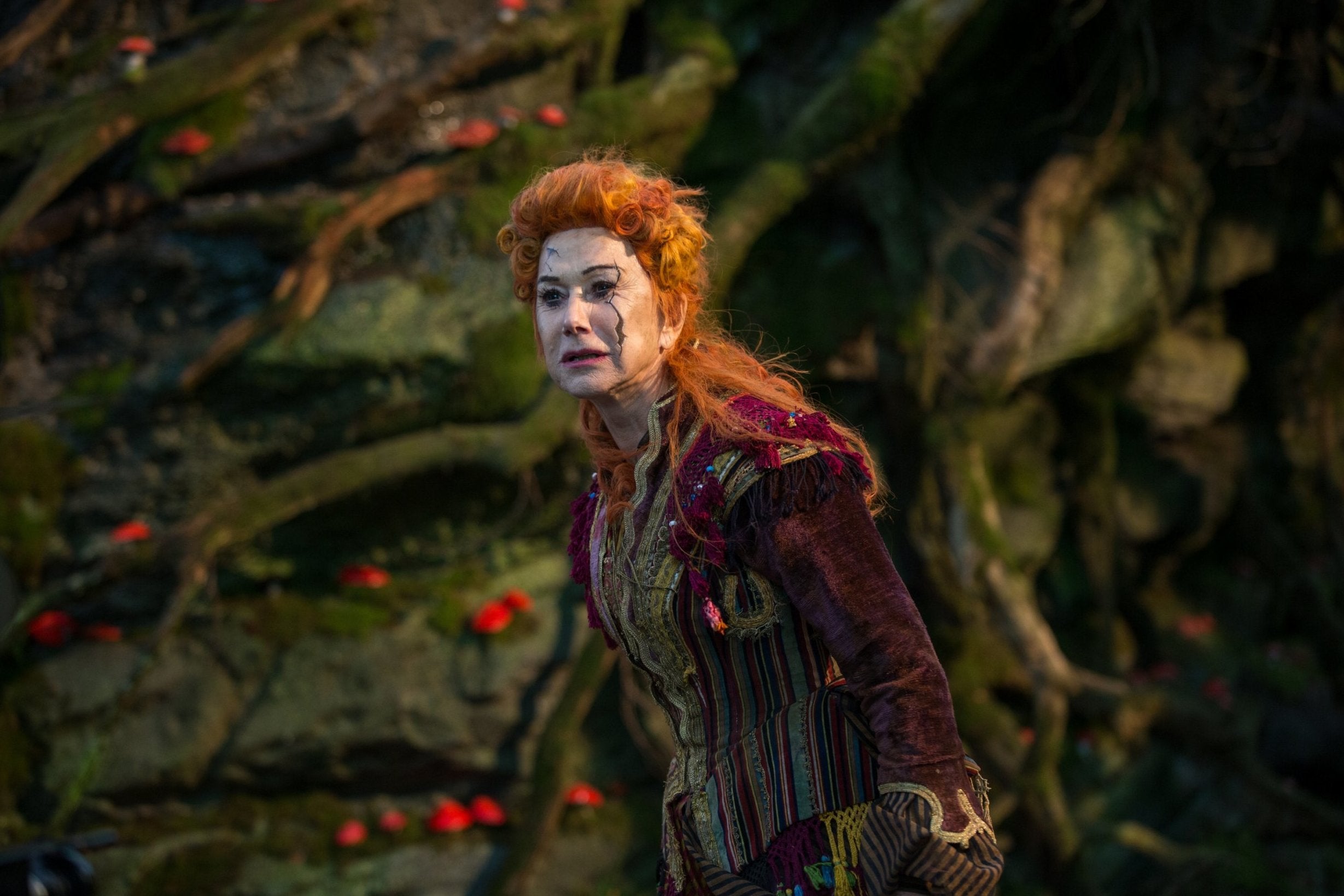
A carousel was specially created to fit the sinister look, with 25 vintage-styled animals – including giraffes, dragons and ostriches – carved out of foam, all with terrified looks on their faces. The land’s regent, Mother Ginger (Helen Mirren), meanwhile, has shut herself away in a giant marionette – in a direct nod to the ballet, its skirt is a big top circus tent where several polichinelles (clowns) perform.
Mother Ginger is dressed more like a ragtag pirate, in a tattered jacket and boots, her face cracked like a porcelain doll. Her hairstyle is a pile of voluminous curls that draws its basis from Thomas Gainsborough’s portraits of the 1750s, although with a much more dishevelled appearance. While the ballet’s Mother Ginger is a comical character, who parades around on stage wearing a giant hoop skirt, only for an army of her children to emerge and start dancing, the film has reimagined the character and given her new life.
In creating such a rich and expansive world, Disney’s The Nutcracker and the Four Realms will inspire a whole new generation to fall in love with a classic story.
The Nutcracker and the Four Realms is released in UK cinemas on 2 November
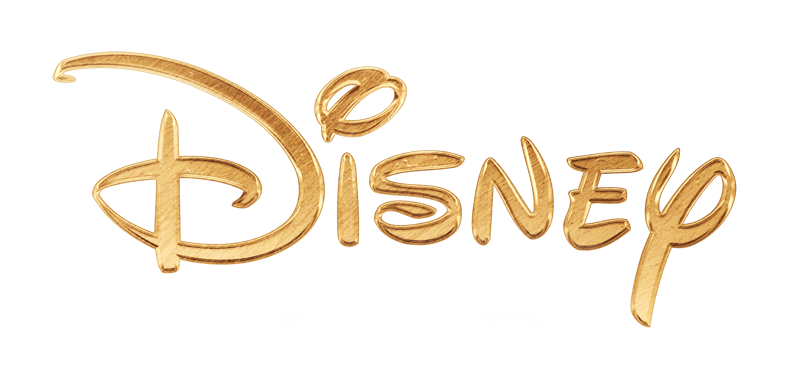

Join our commenting forum
Join thought-provoking conversations, follow other Independent readers and see their replies
Comments